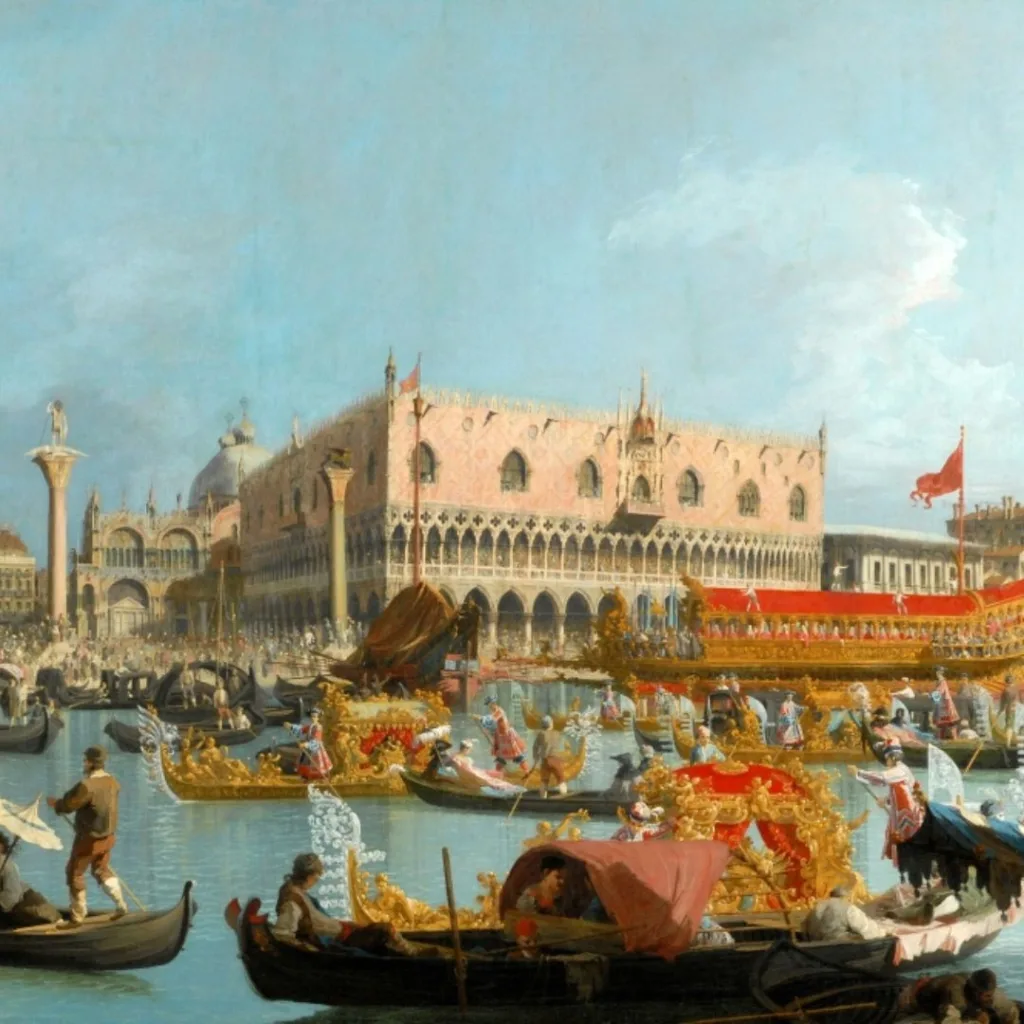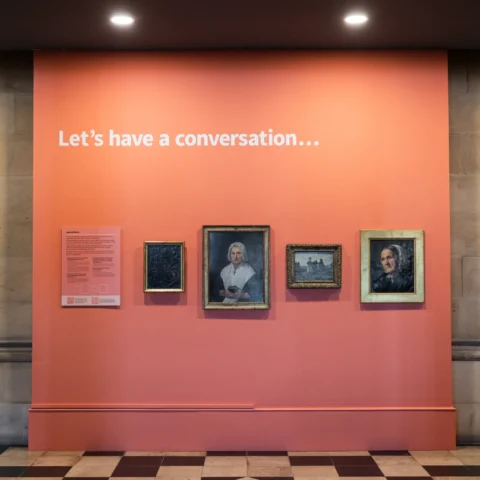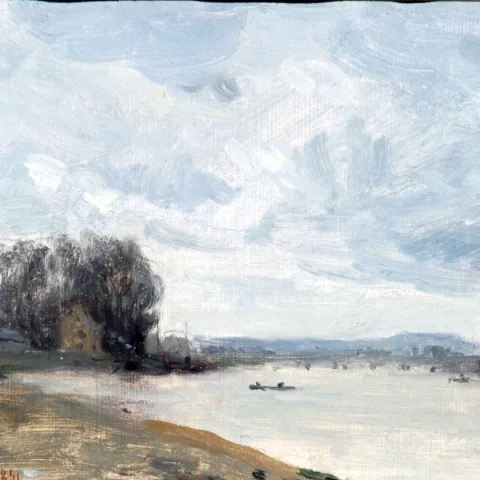The Bowes Museum Blog

Brief Encounter

Look! There’s a crocodile in the Canaletto! Yes, one of the two enormous paintings depicting events on the Grand Canal in Venice which hang in The Bowes Museum really does contain a croc… or is it an alligator?

More of that later but it is a good example of how sometimes ‘hidden’ details can reward an onlooker patient enough to absorb beyond the superficial.
Our encounters with art are, generally, brief. Very brief – about two seconds on average according to various past studies. Even the most famous painting of all, the Mona Lisa which hangs in The Louvre, Paris, only merits an average of 15 seconds’ attention. Why? Well, appreciation of art is as individual as the art itself. But then, a brief encounter can sometimes spark a lifetime’s love.
The walls of the three main picture galleries of The Bowes Museum are covered with paintings, some might say crowded, but the density of the display is similar to that which was adopted when the museum opened in 1892. Its comprehensive collection of European paintings include many which are world class, some that are priceless masterpieces and all are worthy of attention – from one of the smallest and oldest, Sassetta’s Miracle of the Eucharist (c1423), to the eye-popping sized Canaletto-double which dominate the wall facing the gallery entrance.
So where to begin? No-one can take in everything – at least not on the first visit – so let your gaze roam. The collection, which dates from the 15th to 19th centuries and includes various schools and subject matter, has great UK importance. Among them there will be one (and probably more) that will particularly catch your eye. When that happens, stop and focus. Previous eye-tracking studies have proved that when we stop to study a painting, we do so incrementally. We look at one small area of the canvas, then another, in short glances before connecting all the parts to make a whole. So, as you do this, ask yourself a series of questions. (Such as what is it about the painting that you like/dislike? Can you see colour and texture? And, importantly, how does it make you feel?) Take your time. Ponder how and why your answers influenced your sub-conscious and remember: no single interpretation of art is ever ‘right’. Our encounter with the work, however brief, is ours alone and how much we take away from it is up to us.
Back to the ‘croc-aletto’. Italian artist Giovanni Antonio Canal (1697-1768) commonly known as Canaletto, was an important member of the 18th century Venetian School. Two of his paintings (acknowledged as among his best works) were acquired by the Museum in 1982. If you want to look for the hidden crocodile, you will need to stare for many minutes at the one which shows the Doge in his State Barge after the Ceremony of the Wedding of the Sea. And for anyone possessing a fanciful imagination, such passage of time might sound like a ticking clock… Could it be Tick-Tock Croc? No. This is not a Disney escapee from JM Barrie’s Peter Pan (the crocodile that swallowed a clock) but instead it is symbolic of a dragon being slain, which in turn is symbolic of evil being vanquished.
Give up? Find the two tall columns just left of the palace and look at the statues which are on top. On the right is a winged lion: this is the symbol of St Mark the Evangelist. He replaced the first patron saint of Venice who was St Theodore of Amaseas who is atop the other column. Now look at the creature he is standing on…
Blog by: Dorothy Blundell, columnist at the Teesdale Mercury. Article published in the Teesdale Mercury.







